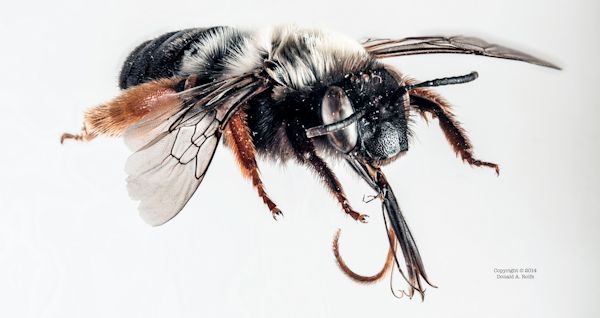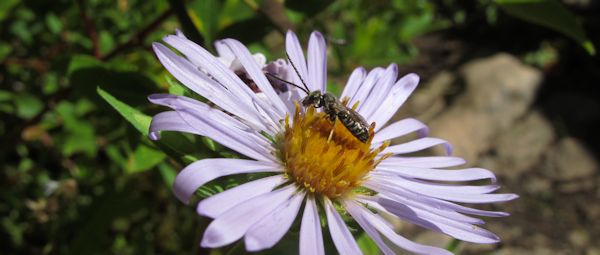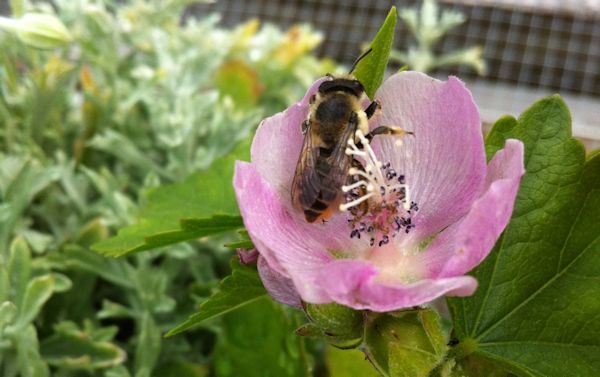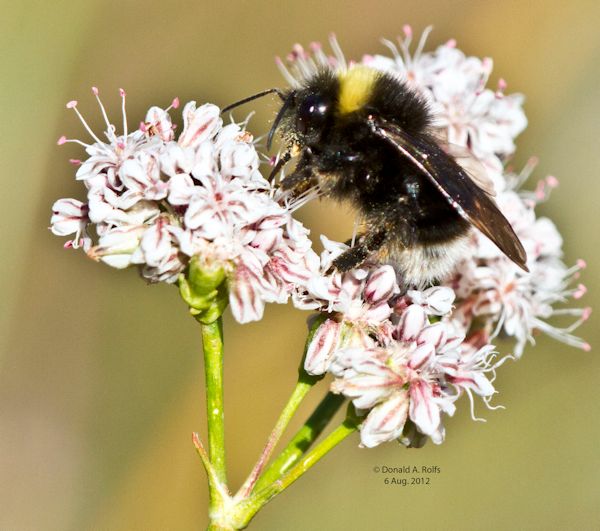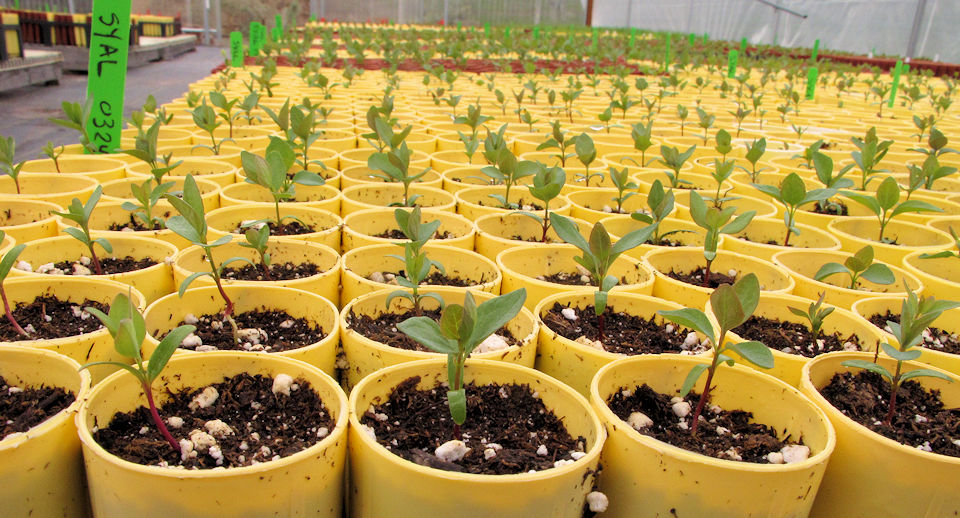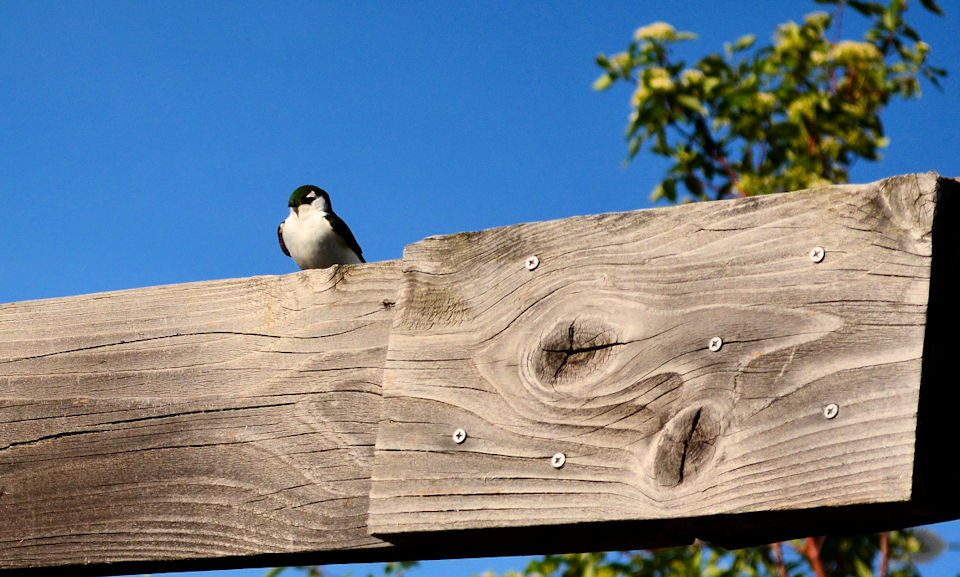Native Plants for Native Bees
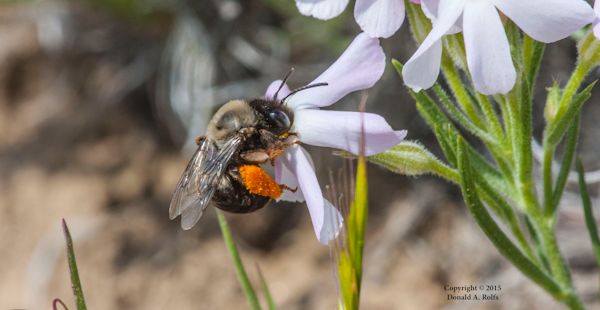
Anthophora bee on phlox
A few weeks back I attended a talk by Don Rolfs, who spoke about the over 700 species (!) of native bees we have in this state. Don, who has done fine work and photography on our local butterflies, is now intensely focused on documenting and photographing the native bees in our area (several of his fine photos accompany this post). I hope that he’ll produce a guide to North Central Washington bees within a few years.
Eucera fulvitarsis
Our many and diverse native bees co-evolved with our native flora, with both plants and insects now relying to a greater or lesser extent on each other. The bee emergence often corresponds with the bloom of their preferred native plants, and many native plants are best, or exclusively, pollinated by the native bees.
Native bee on Erigeron sp. (fleabane)
An orchardist friend, whose pear trees are mostly situated in narrow canyons near Cashmere, has relied on native bees to pollinate his crop for years, as did his father and grandfather before him. He brings in a few token honeybee colonies, mostly to placate his orchardist neighbors, but the native habitat close to his fruit trees is the source of his native pollinators.
Native bee on Iliamna rivularis (mountain hollyhock) in nursery
You can encourage native bees in your area by observing a few simple practices:
- Provide plants with varied flower types and that bloom for extended periods. Native plants that bloom in summer and fall can be especially valuable for many pollinators, including bees. Key native summer and fall bloomers to consider in our area include yarrow (Achillea millefolium), blanketflower (Gaillardia aristata), cutleaf penstemon (Penstemon richardsonii), snow buckwheat (Eriogonum niveum), tall buckwheat (Eriogonum elatum), rabbitbrush (Ericameria nauseosa) and goldenrods (Solidago sp.)
- Provide nesting habitat. Most native bees are ground nesters and often use dry ground with sparse or no vegetation for their nest site. A non-irrigated bank or flat can be of use. Some species nest in dead wood or plant stems. Having an old stump or log can be helpful, and consider leaving plant stems of both woody and herbaceous species unpruned through the winter, i.e. don’t have too clean an landscape!
- Use insecticides very judiciously, if at all. Use pesticide alternatives as much as possible, and never spray near blooms. Remember, insects, including aphids and caterpillars, are food for other insects and birds.
The Xerces Society, based in Portland, OR, is focused on invertebrate conservation and is great resource for information on insect pollinators, including bees (www.xerces.org). They have guides to aid you in bee identification, if you are so inclined, as well as info on creating and maintaining structures for bees that nest in holes in wood, like mason bees (Osmia sp.).

